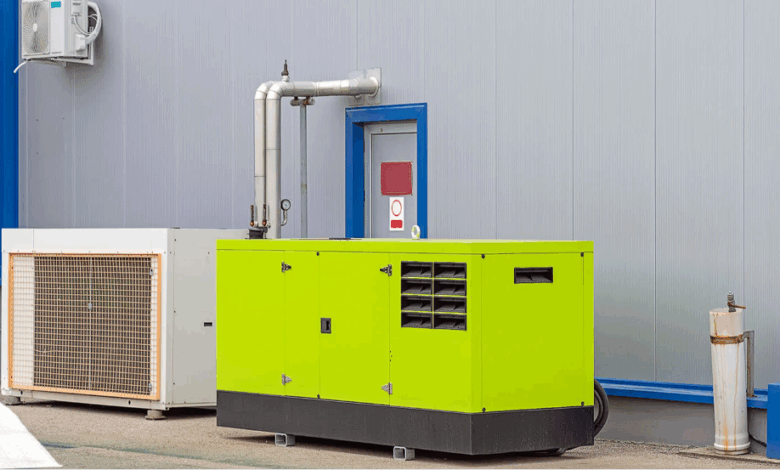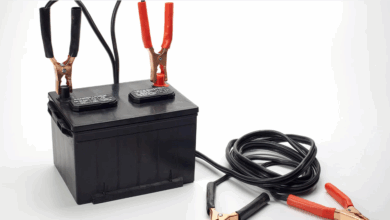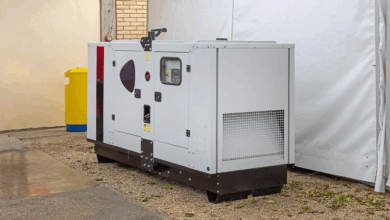How to Properly Break in a New Generator – Step-by-Step Guide

Breaking in a new generator is an essential first step to ensure long-term performance, better fuel efficiency, and easier startups—especially in colder temperatures. From personal experience, I’ve noticed a significant improvement in how my generator performs after a proper break-in. Startup is quicker, the engine runs smoother, and there’s a noticeable reduction in wear and tear.
In this guide, I’ll walk you through a detailed, beginner-friendly process to help you break in your new generator the right way.
What Is Generator Break-In?
Breaking in a generator refers to the initial process of conditioning the engine by running it under controlled conditions. This helps smooth out internal engine surfaces, flush out metal shavings or contaminants, and ensure proper lubrication of all moving parts. Think of it as “warming up” the engine for a lifetime of reliable service.
What You’ll Need to Get Started
To begin the break-in process, gather the following:
- Oil Conditioner: A thick oil additive like Lucas Oil 10001 is great for lubricating engine parts and preventing dry starts.
- Engine Oil: Purchase 3–4 liters of oil (typically 10W30 or 5W30, depending on the manufacturer’s recommendation) as you’ll be draining and refilling a few times.
- Spark Plug: Usually included with the generator—will need temporary removal.
- High-Quality Fuel: Use premium gasoline, optionally with a fuel stabilizer like STA-BIL.
- Magnetic Oil Dipstick & Basic Tools: This will help you extract fine metal particles from the crankcase during the oil change.
How to Break in a Generator – Step-by-Step Instructions
Step 1: Unbox and Inspect Your Generator
Start by unboxing the generator and thoroughly checking it for shipping damage. Make sure all accessories are included and nothing looks broken or out of place.
Step 2: Read the User Manual
Every manufacturer may have slightly different break-in recommendations. Read the manual for specific oil types, capacities, and procedures to avoid voiding the warranty.
Step 3: Remove Spark Plug and Pre-Lubricate Cylinder
Carefully remove the spark plug and add a few drops of oil conditioner into the cylinder. Slowly pull the recoil starter 7–8 times to evenly distribute oil and lubricate internal components.
Step 4: Add Engine Oil
Pour a small amount of oil conditioner into the crankcase, then add the manufacturer-recommended engine oil using a funnel. Refer to your manual for the exact oil level.
Step 5: Add Fuel
Fill the tank with clean, high-octane gasoline. Adding a fuel stabilizer can enhance performance and extend shelf life, but it’s optional at this stage.
Step 6: Start the Generator
Move the unit to a well-ventilated outdoor space. Ensure the fuel valve and engine switch are set to ON. Disable eco mode if present.
Pull the recoil cord several times until the engine starts. It’s normal to see a little white smoke at first—this is just the conditioner burning off. Switch from “Choke” to “Run” mode, and let the generator idle for one hour without any electrical load.
Step 7: First Oil Change
After an hour, turn off the engine and wait 15–20 minutes for it to cool down. Remove the oil drain plug and drain all the oil.
Use a magnetic oil dipstick to collect any leftover metal shavings. Add a few drops of oil conditioner, then refill with fresh engine oil as specified by the manufacturer.
Step 8: Second Run (No Load)
Run the generator again for another hour with no load. Once finished, allow the unit to cool, then perform a second oil change. Again, use the magnetic dipstick to clean out any residual particles.
This second run ensures the internal components are properly smoothed and the crankcase is clean.
Step 9: Run With Light Load
Now it’s time to test the generator under partial load. Plug in devices that draw 25–30% of the generator’s capacity and run the unit for about 2.5 to 3 hours.
Congratulations! Your generator is now fully broken in and ready for heavy use, including long blackouts or job site tasks.
Is Generator Break-In Really Necessary?
Absolutely. Skipping the break-in process can significantly reduce your generator’s lifespan. Brand-new engines often come with dry surfaces and small imperfections that need smoothing out. Running it under load without proper lubrication may cause damage right from the start.
A proper break-in leads to:
- Smoother operation
- Better fuel efficiency
- Reduced maintenance needs
- Easier startups
How Long Does It Take to Break in a Generator?
You should plan to spend 5–6 hours total, broken into a few runs with oil changes in between. Although it takes time, it’s a one-time effort with long-term benefits.
Can I Use a Generator Without Breaking It In?
Technically, yes—but it’s not recommended. Starting a generator without breaking it in can lead to increased wear, poor efficiency, and costly repairs later on. Think of it like skipping the seasoning step in cast iron cookware—it’ll still work, but not nearly as well.
Taking the time to break in your generator is an investment in its longevity and performance. While it may seem time-consuming, you only need to do it once—and the benefits are worth it. You’ll enjoy a more reliable, longer-lasting machine with fewer maintenance issues down the road.
Thanks for reading! Take care of your generator, and it’ll take care of you during your next power outage.
Frequently Asked Questions (FAQs)
Can I use synthetic oil for breaking in a generator?
Yes, synthetic oils offer excellent cleaning and heat resistance properties. Many manufacturers even recommend them for the break-in process.
Do I need to break in a generator more than once?
No. Once the initial break-in is completed properly, there’s no need to repeat it unless the engine undergoes major modifications.
Is the break-in process different for specific brands like Champion?
Not significantly. Most brands follow a similar process, but always refer to the specific user manual to follow the manufacturer’s guidelines precisely.




![How to Bypass CO Sensor on Generator – [4-Step Safety Guide]](https://www.generator411.com/wp-content/uploads/2025/08/co-sensor-on-generator-390x220.png)